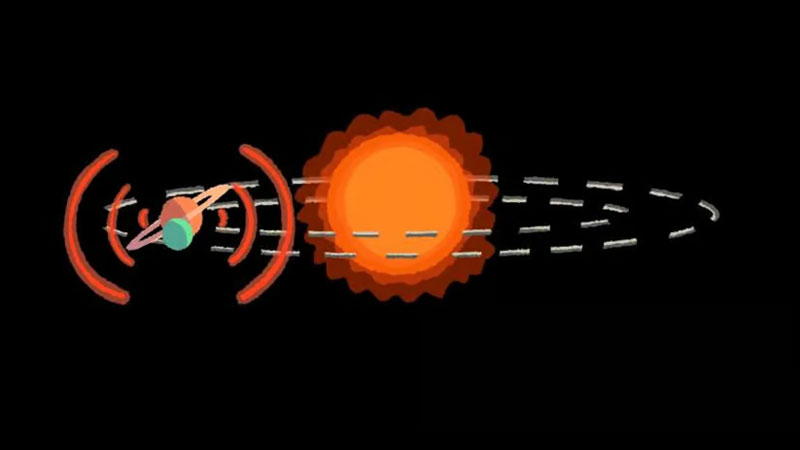Earthly astronautics serves as a source of powerful directional radio signals that are quite capable of reaching other worlds and becoming proof of the existence of intelligent life on our planet, if anyone is interested in this. In the same way, you can try to find signs of intelligent life on other worlds by looking for traces of alien space programs. The best candidate for the search was the nearby TRAPPIST-1 system, which was carefully listened to.

Image source: Zayna Sheikh / newatlas.com
Signs of at least seven exoplanets were discovered in the TRAPPIST-1 system, some of which are located in the habitable zone of the local star. It is 40 light years away from Earth and is convenient for observation. If there is a developed civilization in this system and it has already grown to space flights, then this should be accompanied by intense radio exchange between the mother planet and stations for studying other worlds in the system.
And although 40 light years is a decent distance for an artificial radio signal to fade or get lost in noise, a message directed and amplified for space may well reach Earth. In this situation, the main thing is to be on a direct line between the mother planet in the TRAPPIST-1 system, the planet being studied local to this system, and the Earth. Such events are frequent enough to be monitored. Scientists from the SETI project, in collaboration with colleagues from the University of Pennsylvania, calculated such windows and conducted a 28-hour listening session of the object.
Scanning space in the direction of the TRAPPIST-1 system produced millions of radio signals. The filters left the most promising ones, of which there were 11,127. Of this number, 2,264 signals occurred during the “confrontation” between the Earth and two planets in the alien system. A detailed analysis of the remaining radio signals did not find any signs of artificial origin in them.
«The methods and algorithms we developed for this project could ultimately be applied to other star systems and increase our chances of finding regular connections between planets outside our solar system, if they exist,” said Nick Tusay. first author of the study. One failure does not mean failure. Finally, no one promised that in the TRAPPIST-1 system there would certainly be intelligent life at the level of space civilization.